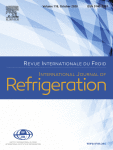|
Autores/as
Asensio-Delgado, S.; Jovell, D. ; Zarca, G.; Urtiaga, A.; Llovell, F. ; Zarca, G.; Urtiaga, A.; Llovell, F.
|
Abstract
European regulations are limiting the use of hydrofluorocarbons (HFCs) as refrigerants because of their elevated global warming potentials (GWPs). Apart from their substitution by other compounds with lower environmental impact, one of the plausible approaches to meet the legal requirements is the formulation of new refrigerant blends containing a low GWP compound (e.g., hydrofluoroolefins) mixed with one HFC that provides the necessary thermodynamic characteristics to act as an effective refrigerant. Thus, the recovery and reuse of HFCs seems a promising approach to increase their lifespan and reduce their production. However, current regeneration technologies that are based on distillation are highly energy-intensive. Therefore, the development of novel separation processes to selectively separate HFCs is needed for the practical implementation of circular economy principles in the use of refrigerants. This work is a step forward on using ionic liquids (ILs) to selectively separate F-gases. The advanced molecular-based soft-SAFT equation of state (EoS) is used as a tool to assess the potential of ILs as a solvent platform for the selective separation of the compounds forming the R410A refrigerant blend: R32 and R125. Soft-SAFT is employed to model the absorption of these HFCs into different ILs with different fluorinated anions. Ternary diagrams are then predicted for the absorption of R32/R125 mixtures into selected ILs to evaluate the competitive selectivity between both compounds. Based on this study, a potential ionic liquid candidate is chosen and a process simulation is performed to estimate the approximate energy cost of the separation and recovery process.
|

WoS
Scopus
Altmetrics
 
|
